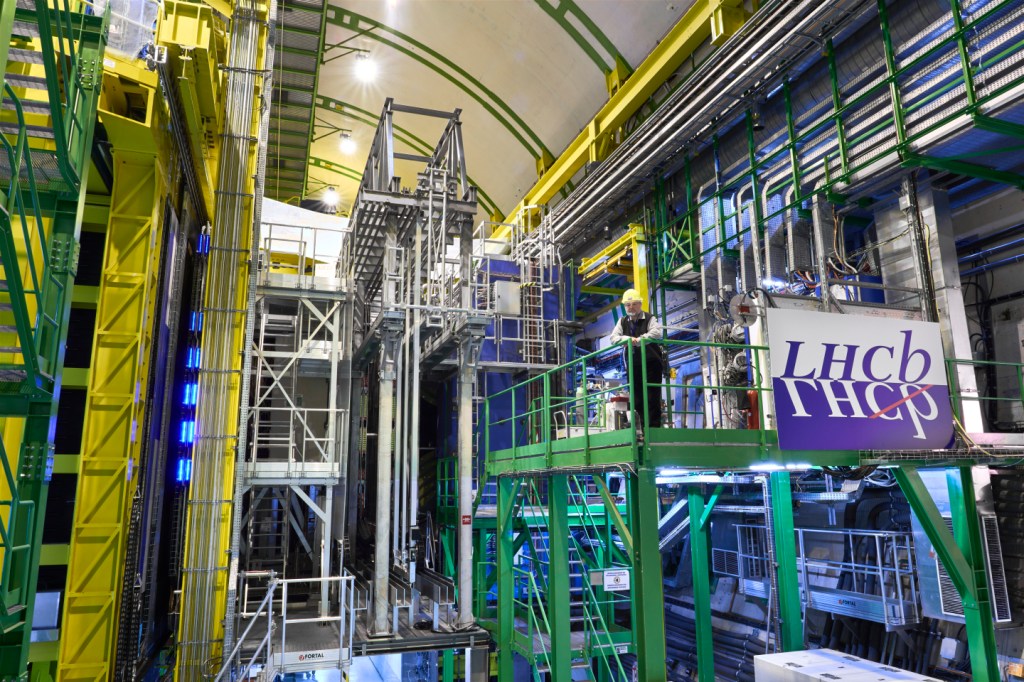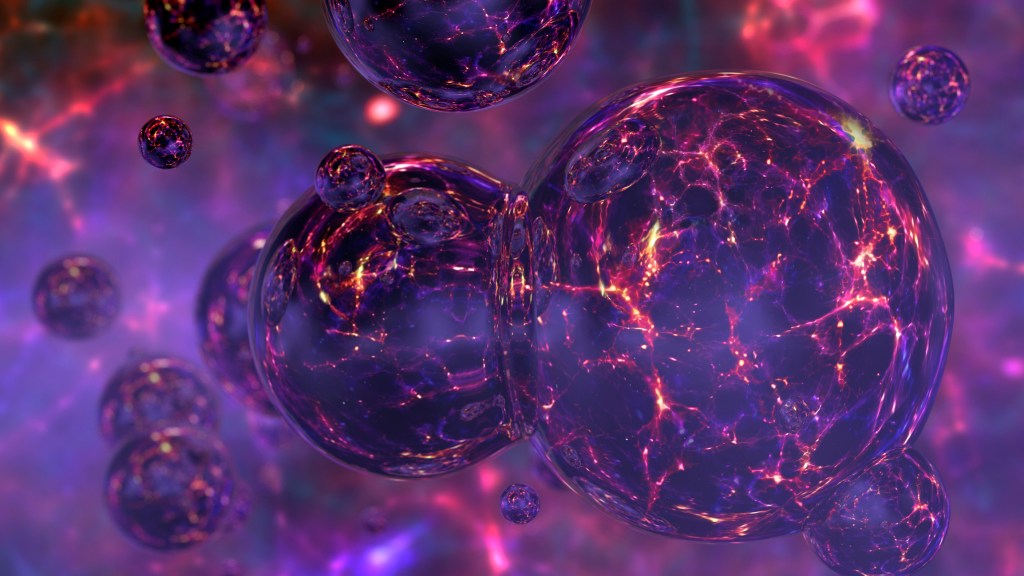In a major physics milestone, scientists at CERN’s Large Hadron Collider (LHC) have observed the first evidence of a Higgs boson particle decaying into two matter-antimatter bottom quarks. This achievement, announced jointly on Tuesday by the ATLAS and CMS teams at LHC, has significant implications for future research into the most basic building blocks of matter in the universe.
If that all sounds like a bunch of particle wonk, fear not—even scientists in the field regard these quantum-scale interactions as mind-bogglers. So let’s back up and revisit what the Higgs boson is and why it’s any of our dang business how it decays.
Videos by VICE
The existence of this famous particle was proposed in the 1960s by a team of physicists including its namesake, Peter Higgs, to explain how some massless particles appeared to magically gain mass. The Higgs boson became an important lynchpin to the Standard Model of particle physics, which is our best attempt to explain how the forces of the universe work (minus gravity.) Proving that the particle did exist would validate the Standard Model, and demonstrating that it could not exist would mean rethinking our most basic assumptions.
As it turns out, the Higgs boson is a total flake that only hangs around for one septillionth of a second before decaying into smaller parts. Over the past half-century, scientists repeatedly tried and failed to capture the fallout of its flickering existence by crashing particles into each other at near light speed in a series of accelerators.
It wasn’t until the summer of 2012 that the LHC, the most powerful accelerator in the world, finally smashed some particles just right, and definitively identified the decay of a Higgs boson into smaller particles called Z bosons, W bosons, and photons. The particle was shown to exist and the Standard Model was validated—a discovery that earned Higgs and physicist François Englert the 2013 Nobel Prize in Physics.
So if the Higgs boson’s decay has already been observed, what’s special about the new announcement from the ATLAS and CMS teams? Once again, it has to do with the Higgs boson being a prickly customer that does not like to make anything easy for the people who study it.
The particle has long been theorized to decay along five signature pathways, of which four have already been observed at LHC. The fifth hypothetical pathway, in which the Higgs boson decays into subatomic particles called bottom quarks, is both the most difficult to trace and the most common, and is estimated to be the outcome of 60% of Higgs decay events.

To make matters worse, smashing particles together produces heaps of bottom quarks, so it is challenging to track down which of them might have originated from a Higgs boson.
For years, the LHC teams have been working with Fermilab, an accelerator outside Chicago, to capture the Higgs boson’s favorite way to decay. By analyzing thousands of collisions, they were able to isolate bottom quarks from a Higgs boson by using other common decay products as a roadmap.
Read More: Did the LHC Bag a Ginormous New Higgs Boson?
“Luckily, there are a few Higgs production mechanisms that produce identifiable particles as byproducts,” Chris Palmer, a physicist at Princeton University and member of the CMS team, said in a statement. “We used these particles to tag potential Higgs events and separate them out from everything else. So we really got a two-for-one deal with this analysis because not only did we find the Higgs decaying to bottom quarks, but we also learned a lot about its production mechanisms.”
So, there you have it: All of the major ways in which a Higgs boson can erupt into smaller parts have now been observed in real life. But while this research marks another breakthrough in our understanding of the universe’s fundamental mechanics, it would be naive to assume that the Higgs boson is done confounding us with its general weirdness. We are still in the infancy of particle physics, and there is much more to learn.
Get six of our favorite Motherboard stories every day by signing up for our newsletter.




